Let’s discover a tour through the galaxy with Mackevision showing their work on the third season of Star Trek Discovery:
© Vincent Frei – The Art of VFX – 2021
Let’s discover a tour through the galaxy with Mackevision showing their work on the third season of Star Trek Discovery:
© Vincent Frei – The Art of VFX – 2021
The BAFTA has revealed their longlists for the EE British Academy Film Awards 2021!
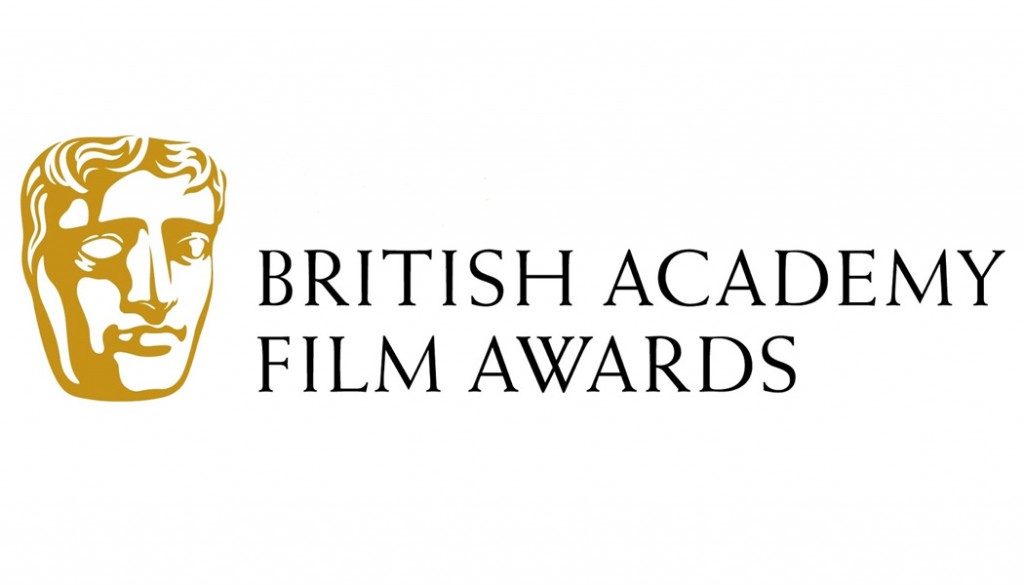
Here is the list for Special Visual Effects:
What’s your top 5?
You can have a look at the complete longlists here.
© Vincent Frei – The Art of VFX – 2021
If you like gore effects, you will be happy with this VFX Breakdown showing the work of Ingenuity Studios on Freaky:
WANT TO KNOW MORE?
Ingenuity Studios: Dedicated page about Freaky on Ingenuity Studios website.
© Vincent Frei – The Art of VFX – 2021
Let’s have a look at this brand new showreel by Elastic featuring their work on Captain Marvel, Game of Thrones, Hunters, Watchmen and many more:
WANT TO KNOW MORE?
Captain Marvel: Dedicated page about Captain Marvel on Elastic website.
Game of Thrones: Dedicated page about Game of Thrones on Elastic website.
Hunters: Dedicated page about Hunters on Elastic website.
Watchmen: Dedicated page about Watchmen on Elastic website.
© Vincent Frei – The Art of VFX – 2021
Last year Dan Charbit told us about DNEG‘s work on the second season of Altered Carbon. Today, he tells us about the new adaptation of The Right Stuff for Disney+.
How did you and DNEG get involved on this show?
I believe the client had seen some of our previous work at DNEG in-line with what they were looking for this show.
How was the collaboration with the various directors and VFX Supervisor Mark Stetson?
Working with Jennifer Davisson executive producer, Chris Long producer and Joshua Levey supervising producer and Mark Stetson VFX Supervisor was great as we connected together very well and quickly. We understood immediately what quality and accuracy they were looking for. Then, they gave us almost full creative liberty for some aspects of the shots like framing, animation and timing.
What was their expectations and approach about the visual effects?
They simply told us « We want to look at the shots and think that has been shot for real! ».
How did you organize the work with your VFX Producer?
Marie Castrie, DNEG VFX Producer, gathered a really good team in a short period of time. Most of the artists were mid or senior level and few of them had even worked on ‘First Man’. We tried to ensure we had a versatile team as well – for example, our lighting supervisor worked in the ocean simulation as well as the lighting.
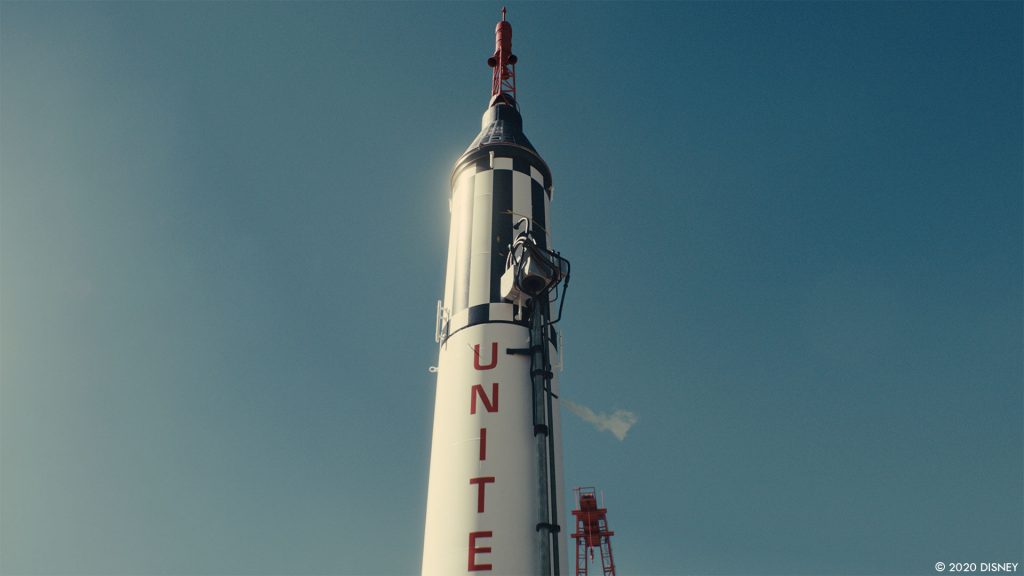
How did you split the work amongst the DNEG offices?
As the client had given us the freedom to change the cameras and animation, we started the show with previs from the DNEG team in London. They did an amazing job doing previs for all the shots in a very short time. We created up to ten different options for a shot and then selected the best. After the client approved our previs, the rest of the work was split between our sites in Montreal, Mumbai and Chennai.
Nitin Sanjay, our build supervisor in Montreal, did an amazing job working closely with our India team. They were mainly focused on the build of everything related to the rocket – the body of the rocket, capsule, periscope and parachutes, doing modeling, textures and shaders lookdev. Some of the artists had worked on the ‘First Man’ rocket, and their expertise and knowledge helped us a lot to speed up the process with no compromise on the quality.
Fiona Wong, DNEG environment & DMP supervisor in Montréal, worked with her team on the launch pad, the surrounding environment and the earth views from space. Michal Tas Maciejewski, our Montreal FX supervisor and his team created all the FX, smoke, fire, ice, grass reaction, re-entry effect around the capsule and of course the splash down.
To complete the supervision team we had Vivekanand Kotha (Lighting supervisor), Kelly Ginet (Layout supervisor) and Anais Ringenbach (CFX/Rig supervisor), all led by Fabricio Baessa (CG supervisor on the show). The compositing team was led by Christopher Maslen.
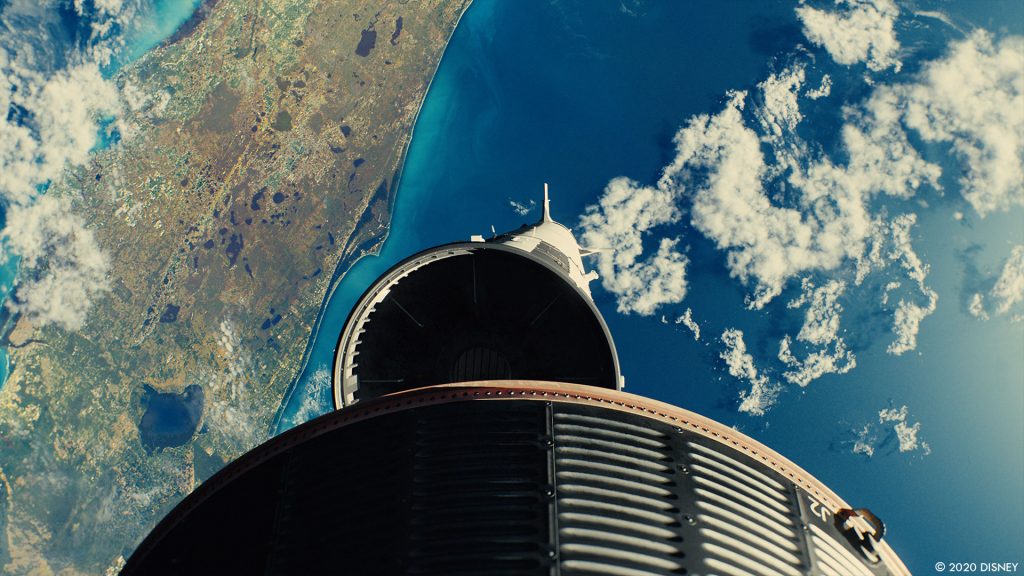
What are the sequences made by DNEG?
The main part of our work was on the rocket and the capsule shots in episode 8, from the launch pad to space and back to the ocean. Except for 2 shots, all were full CG shots.
How did you use the experience of DNEG for space shows like First Man for this one?
I believe all the artists of the team saw ‘First Man’ and were impressed by the VFX. As I said previously, some of the artists in the build team had worked on the Saturn 5 in that show and their experience was very helpful. We didn’t have the same resources for ‘The Right Stuff’, but we set up our own pipeline and methodology to be able to achieve a fantastic level of quality.
Can you elaborate about the rocket creation?
This rocket launch is pretty well-documented and we gathered a lot of period pictures, videos and information. As the goal was to create an exact model of the original rocket, we had to match the photos and tech specs perfectly. We had a NASA consultant who helped us a lot on details and questions.
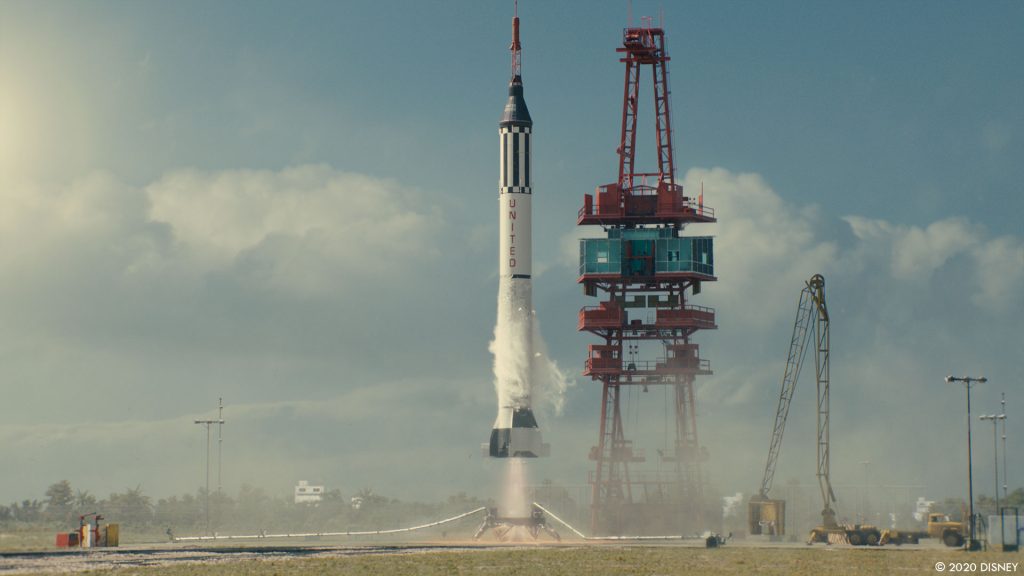
How did you create the various shaders and textures for the rocket?
It was a new rocket. With I believe fresh paint. The rocket stayed on the launch pad maybe few weeks before the launch. On some pictures we’ve seen some scratches and damaged paint parts. We tried as much as possible to create these small details. And then we added a layer of weather dirt and stains. Then we did the final touches with the rocket in the launch pad environment and with the exact lighting condition of the original launch.
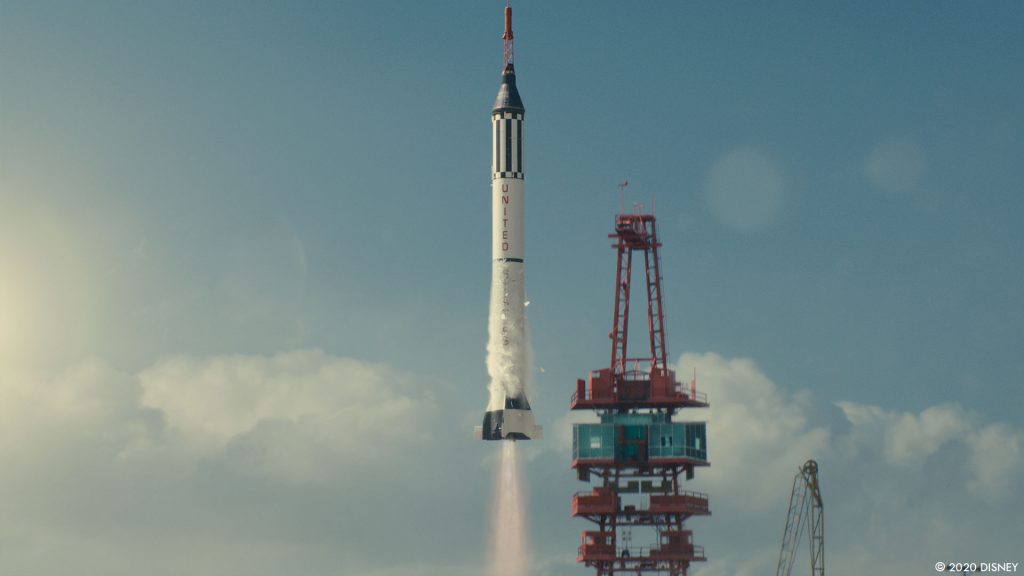
Did you work with NASA for more accuracy?
Robert Yowell, the NASA consultant, was extremely helpful. We worked with him on all aspects of the event. Rocket, launch pad, capsule, periscope, trajectory of the rocket and the capsule, altitude of some steps like the drogue parachute releasing and the main parachute opening. As accuracy was an important aspect of the show, Robert Yowell’s information was really important. For example, we didn’t know that right before touchdown there is a kind of air bag deployed under the capsule to soften the impact on the surface of the ocean.
How did you create the various FX for the take off?
We broke down the pictures and footage we had of the rocket launch. At first, when the flame is initiated, there is a thick white smoke coming out pretty slowly and when the engine starts to push the rocket, we see this smoke being pushed and dissipating quickly. The grass around the rocket was simulated in FX too – during the push it lays down on the ground. The cables on the gantry tower and some other elements move as well, to match the intensity of the push. Some debris of dust and small stones flies away and towards the camera. Then we can see the flame spread down on the ground, burning the tubular structure at the base of the rocket. This kind of fuel doesn’t make a lot of smoke. When the rocket is high enough, we can see the pinkish flame, pretty desaturated and transparent. Later when the rocket is on a darker background the diamonds are visible. They are 3 to 4 brighter diamond shapes visible inside the flame. That was really fun to push that shot that far in the details.
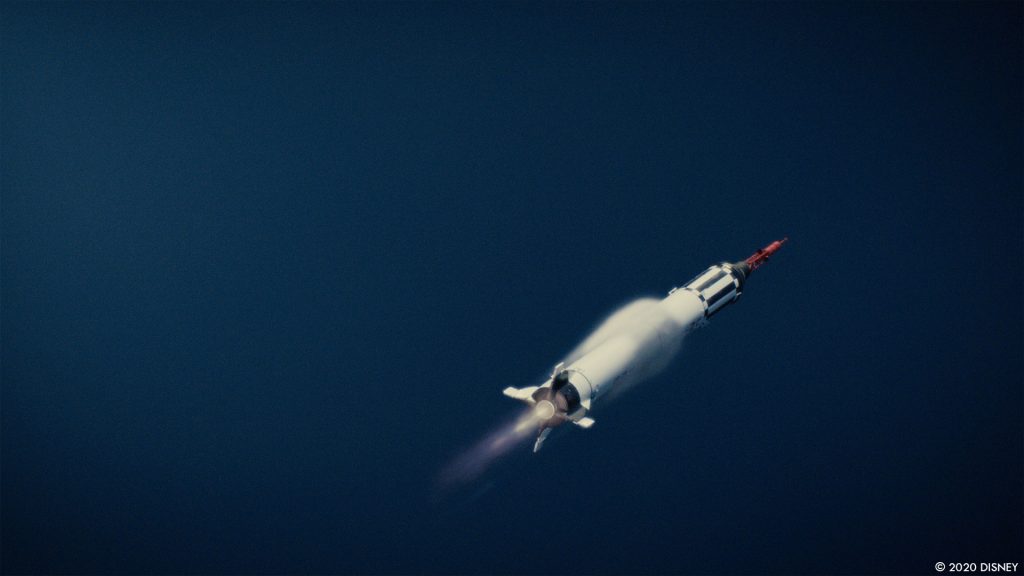
Can you explain in detail about the creation of the space base and the Earth?
The environment team did an amazing job creating the launch pad in full CG. We already had a base CG setup for the earth and the clouds. We tweaked it to match the time of the day, the direction of light, the type and the amount of clouds we needed. From that starting point we painted over the details and atmosphere.
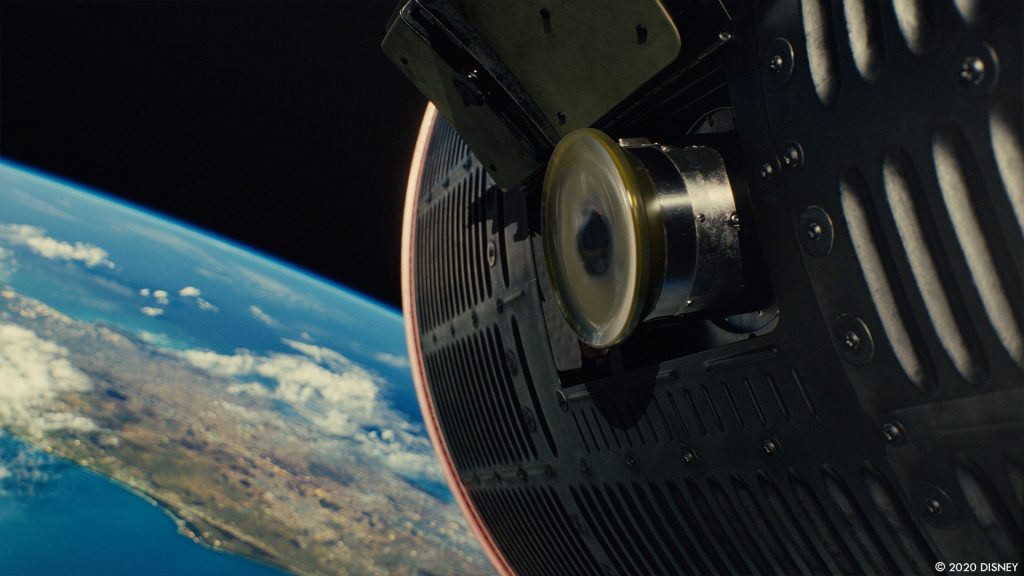
How did you handle the lighting challenge in space?
In space, because there is no atmosphere the lighting is very bright and sharp. We made it as accurate as possible – a bright sunlight and a bit of bouncing light from the earth. The true challenge was to place the camera, the earth and the sunlight in order to get a beautiful picture.
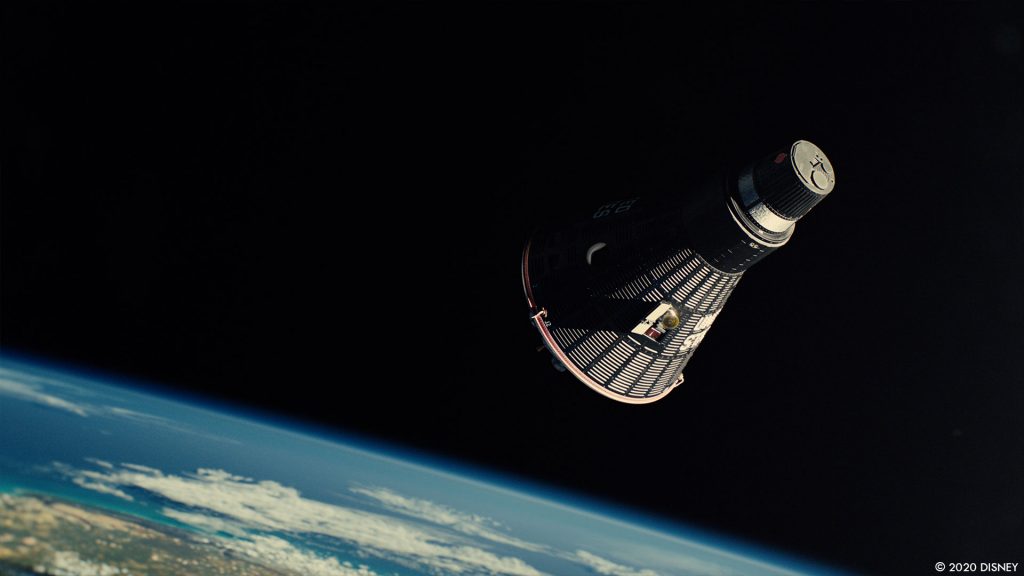
Which sequence or shot was the most challenging?
There were several shots with different challenges. I think the most challenging was the earth view when Shepard says “What a beautiful view!” in episode 8. We really wanted to do an amazing shot here. The accurate direction of the light, the trajectory of the capsule and the position of the camera made it quite difficult to achieve.
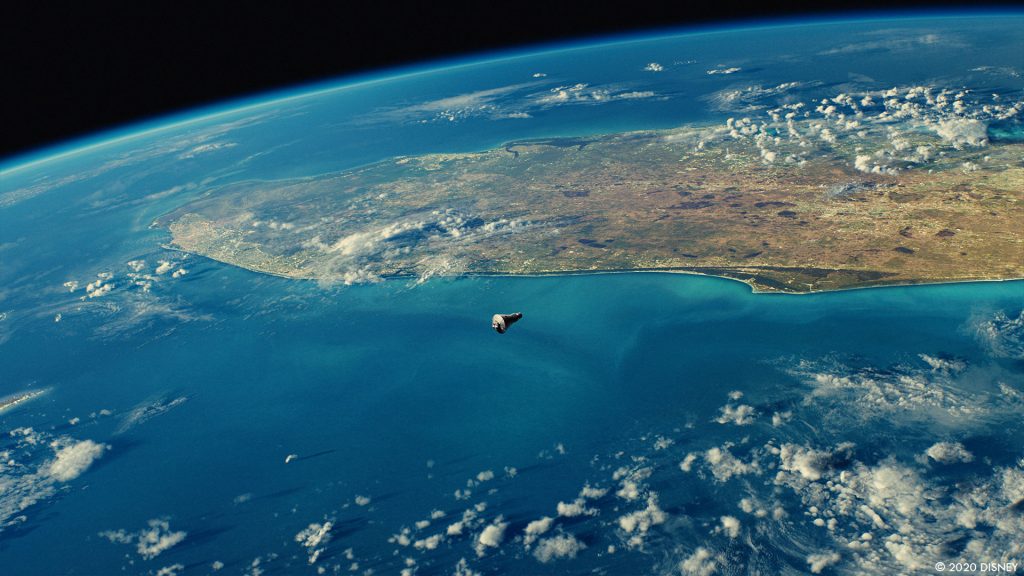
Is there something specific that gives you some really short nights?
Yes, the splash down in the ocean! This kind of effect takes a lot of hardware resources and it is really long to do. The schedule on the show was so tight and this shot was the last one we proposed for final. Thankfully Mark Stetson and the client loved it.
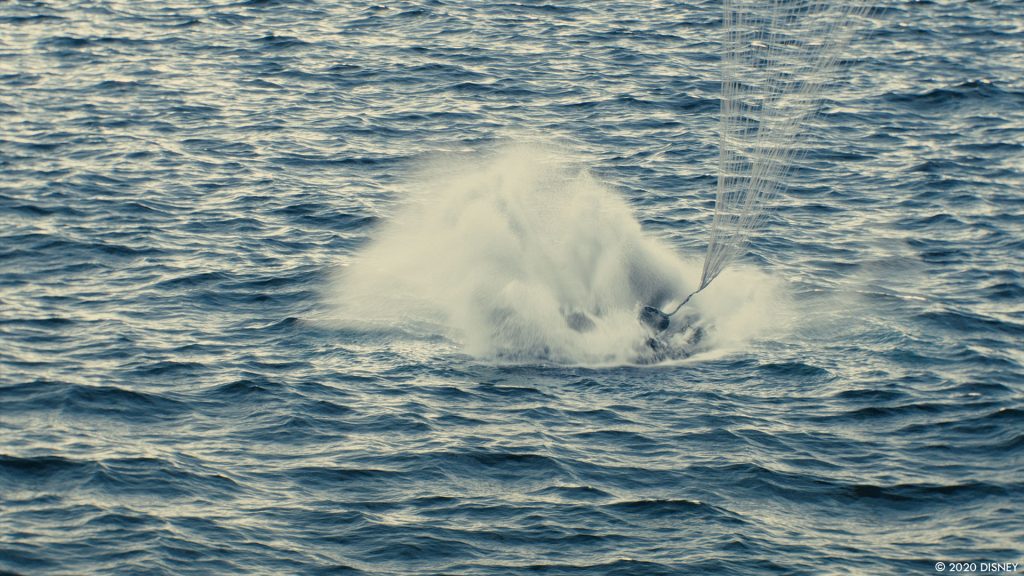
What is your favorite shot or sequence?
Hum, I love all of them, but I’ll choose the take off shot. It looks awesome.
What is your best memory on this show?
I truly loved doing this show. Great small team. Great challenges. My best memory is when, during the last team Zoom meeting, some of the artists expressed that they wanted to continue on the show, doing more shots. That’s a great testimony of the pleasure they got doing the show.
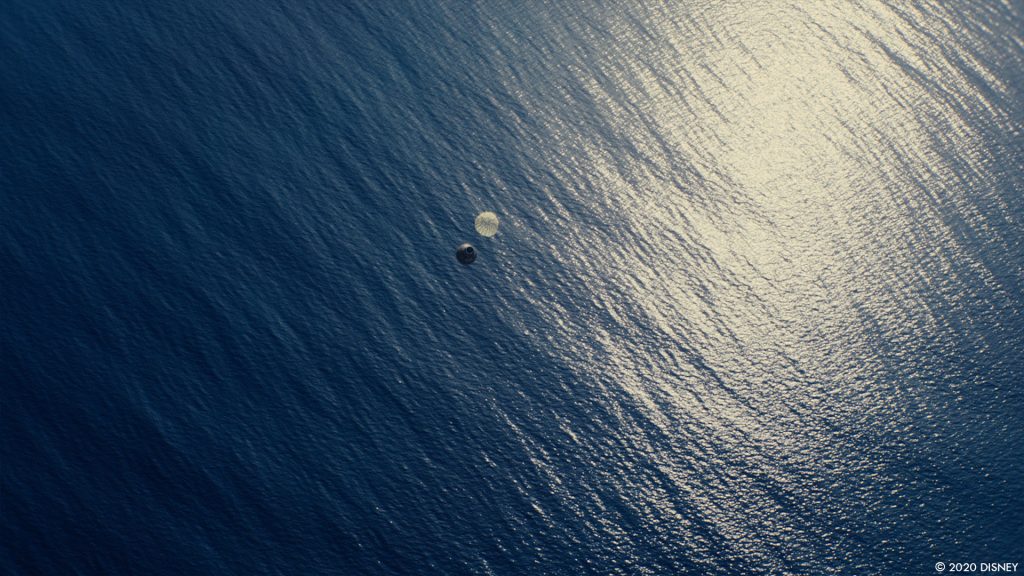
How long have you worked on this show?
About 3 months.
What was the size of your team?
57 across Montreal, India and London.
What is your next project?
The famous impossible question! I can only tell you that it’s a pretty exciting project.
A big thanks for your time.
// The Right Stuff – VFX Breakdown – DNEG
WANT TO KNOW MORE?
DNEG: Dedicated page about The Right Stuff on DNEG website.
Disney+: You can watch now The Right Stuff on Disney+.
© Vincent Frei – The Art of VFX – 2021
The Snyder Cut of Justice League will be released next month! In the meantime, let’s have a look at the work of Pixomondo on the version of 2017:
© Vincent Frei – The Art of VFX – 2021
Eddie Murphy is coming back with a new comedy with his beloved character of Akeem for Coming 2 America!
The VFX are made by:
Industrial Light & Magic (Associate VFX Supervisor: Paolo Acri)
Crafty Apes
Lola VFX (VFX Supervisor: Trent Claus)
The Production VFX Supervisor is Jon Farhat.
Director: Craig Brewer
Release Date: March 5, 2021 (Amazon Prime)
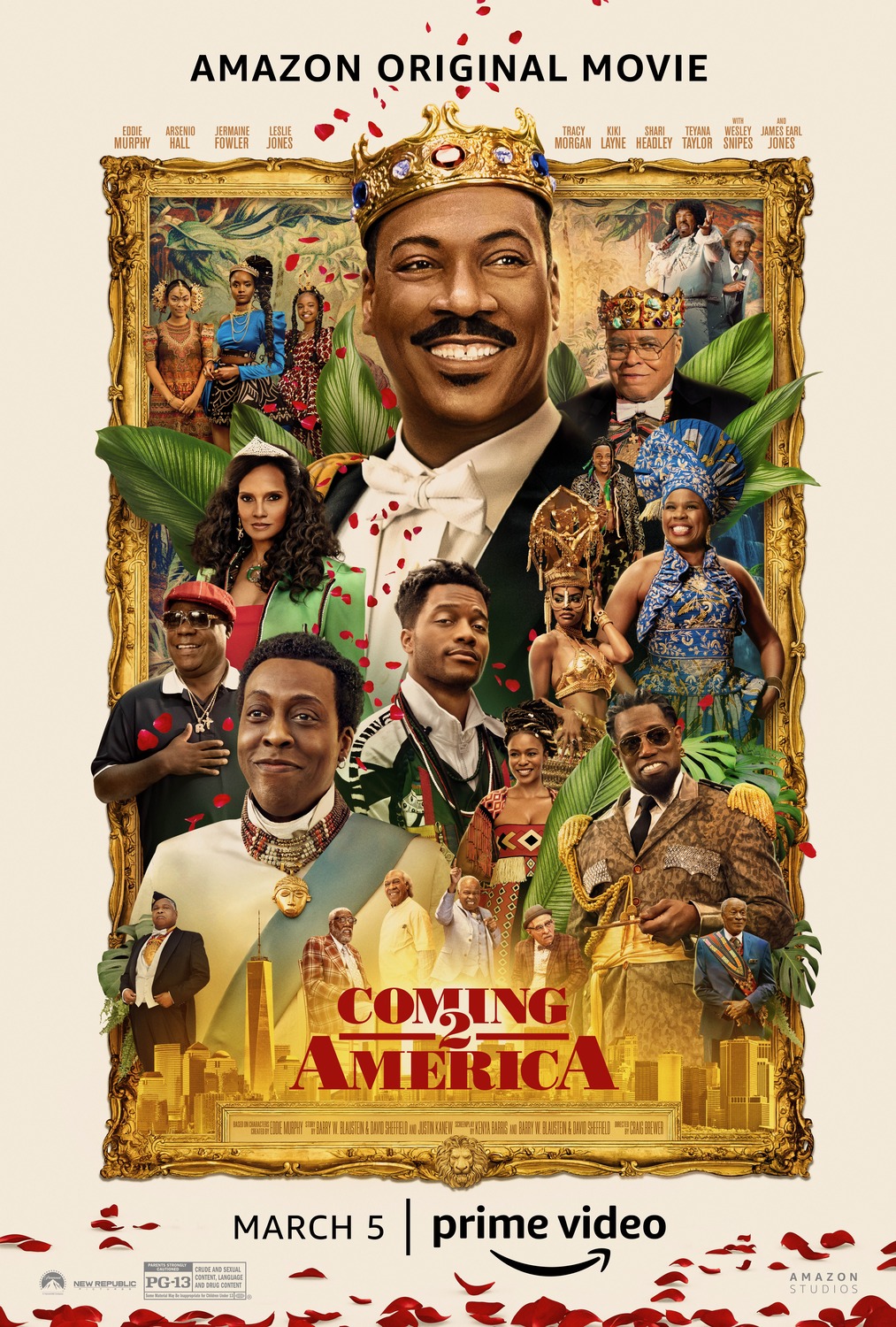
© Vincent Frei – The Art of VFX – 2021
Get ready for lot of adventure with the Netflix movie, Finding ‘Ohana! VFX Supervisor Jay Cooper is breaking down some sequences:
© Vincent Frei – The Art of VFX – 2021
If you like post-apocalyptic series, then be sure to watch this trailer for Tribes of Europa!
The VFX are made by:
Cinesite (VFX Supervisor: Rick Sander)
Creator: Philip Koch
Release Date: February 19 (Netflix)
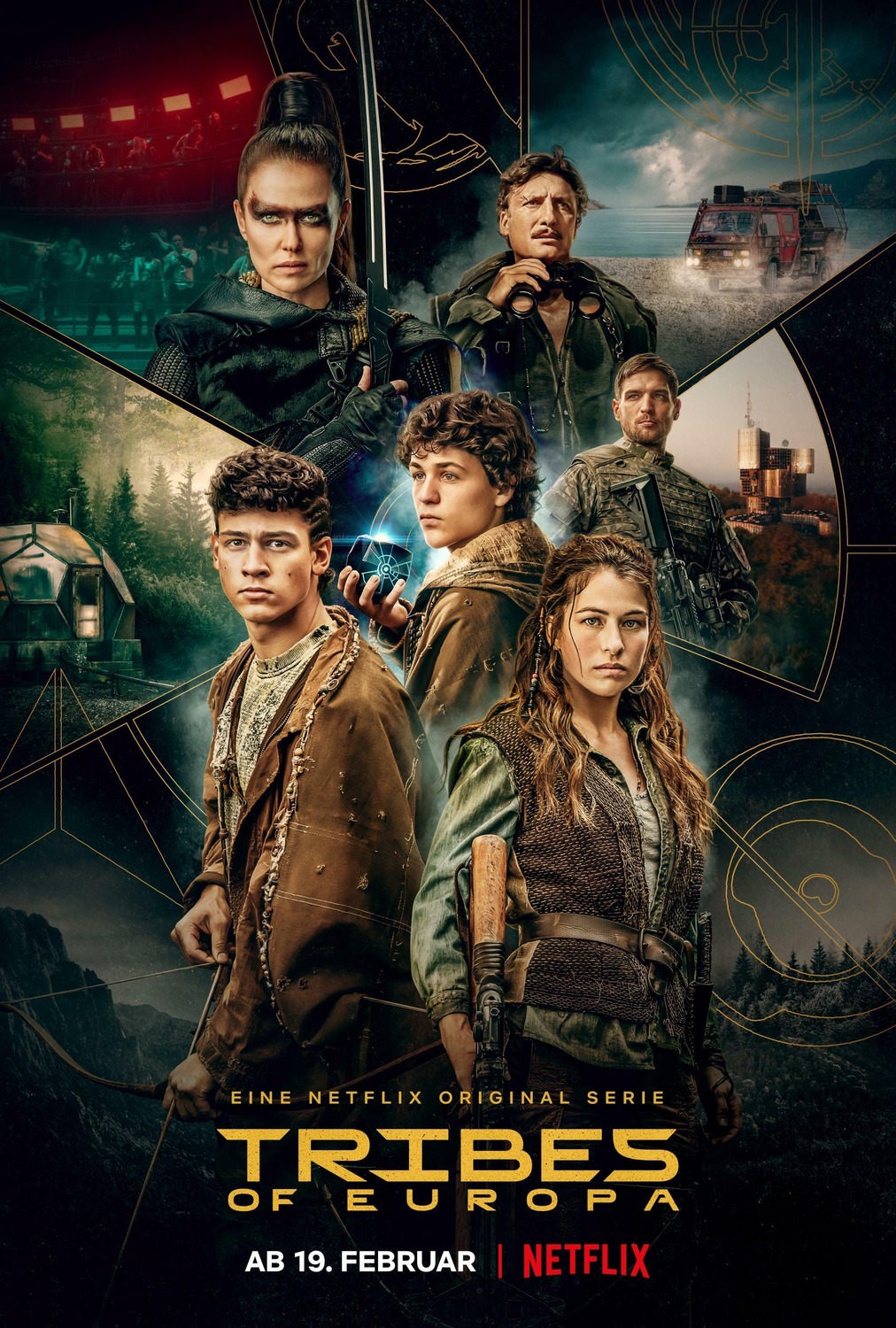
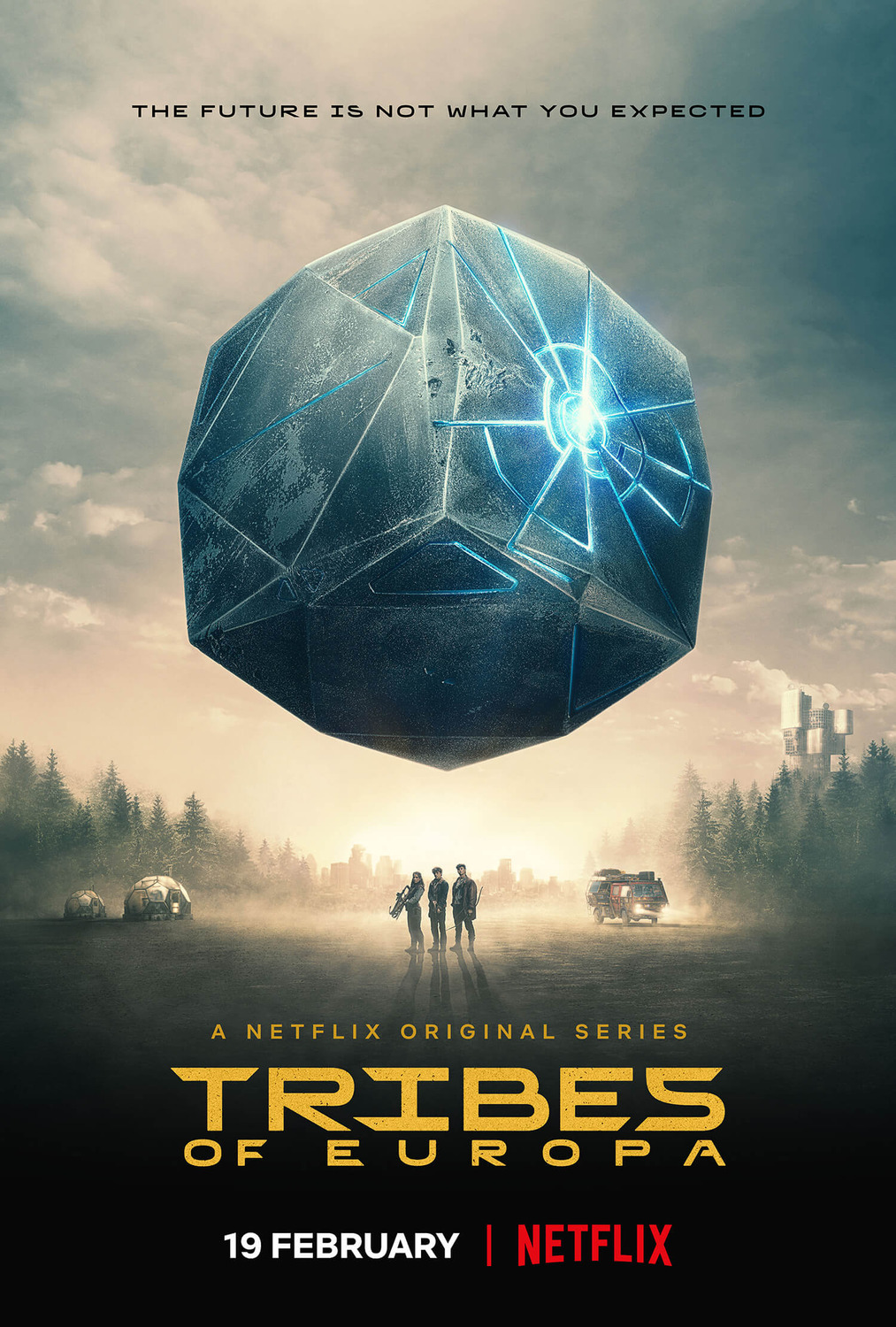
© Vincent Frei – The Art of VFX – 2021
In 2019, Simon Stanley-Clamp explained Cinesite‘s work on Avengers: Endgame. He then completely changed of universe with the Netflix‘s fantasy series, Fate: The Winx Saga.
Samir Ansari began his career in visual effects in 2007. He has worked in many studios such as Framestore, Pixomondo and Cinesite. His filmography includes numerous projects such as John Carter, Spectre, Mowgli and The Wandering Earth.
How did you and Cinesite get involved on this series?
The magical realm of the Otherworld is home to Alfea, a boarding school for talented young fairies, which is where Fate: The Winx Saga is set. A group of teens learn to master their powers while navigating love, rivalries and the monsters that threaten their very existence. Magic is at the heart of this six-part Netflix series, and that’s where Cinesite and I came in!
I initially became involved on Fate: The Winx Saga when I read the pilot script. At that early bidding stage there were 8 episodes. Having defined the shot count and broad spectrum of work, the series reduced to 6 x 55-minute episodes and I moved into the role of production VFX Supervisor, working closely with Netflix and its series production partner Archery Pictures. At this early stage there was no VFX producer and the team was still very small. Archery hired an independent VFX producer and we began working up concept designs and mood boards for 17 different aspects of the show, including 6 key characters, the school environments, the look for how the magical realm would be encased in an invisible barrier and, of course, the villainous Burned One creatures.
As a multi-episodic show, Winx was broken into three blocks. Each director brought their own Director of Photography, so effectively there were three separate creative teams with one VFX team across all. So, at times I would be on set supervising the first block of VFX whilst doing concept for the second block. During one crazy period we had all three directors and DPs at Ardmore Studios at the same time all in different phases of production.
The production was filmed entirely in Ireland across southern locations and around Dublin, as well as on four stages at Ardmore Studios. We shot from September to December 2019, come rain or shine!
From the initial meetings through to filming Cinesite was the lead visual effects vendor. Later we split out some of the smaller work like eye effects, telephone inserts and captions, rig removals etc. to other vendors, having supplied them with designs and assets.
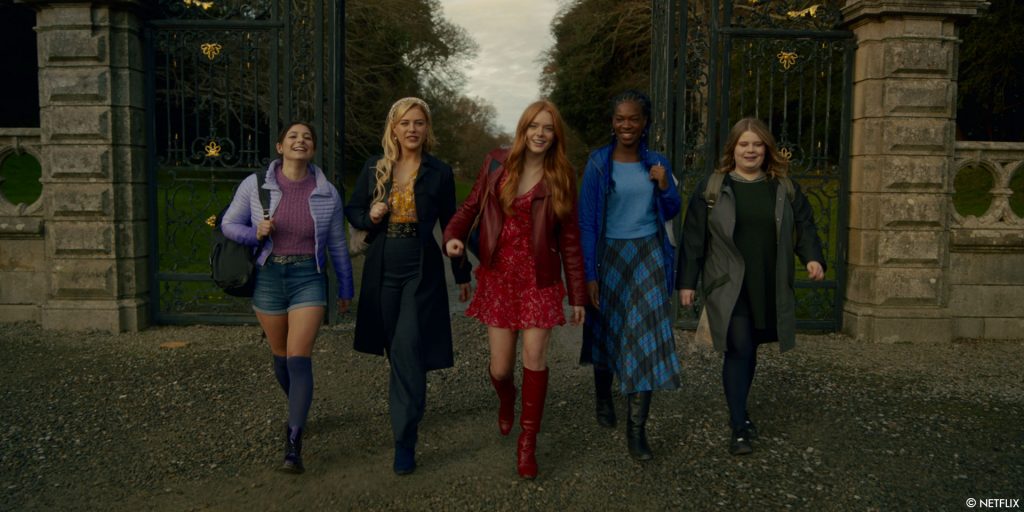
What was the clients approach and expectations about the visual effects?
The client base was unusual in that it was divided into three groups – Netflix, production company Archery Pictures (who have a strong reputation for on screen drama) and Brian Young, who was the show runner; creating the series was his idea. Brian was very experienced in creating team based episodics in the fantasy genre, having been a writer and producer on seven seasons of The Vampire Diaries. Italian studio Rainbow own the original IP for Winx, so we also showed them our designs which they gave notes on.
The visual effects in the series are essentially organic, based around magic derived from water, fire, earth and lightning. There are six key characters based around the elements, with “elemental” being the defining word for the look. It was important that the colour palette be organic and never cross over into science fiction.
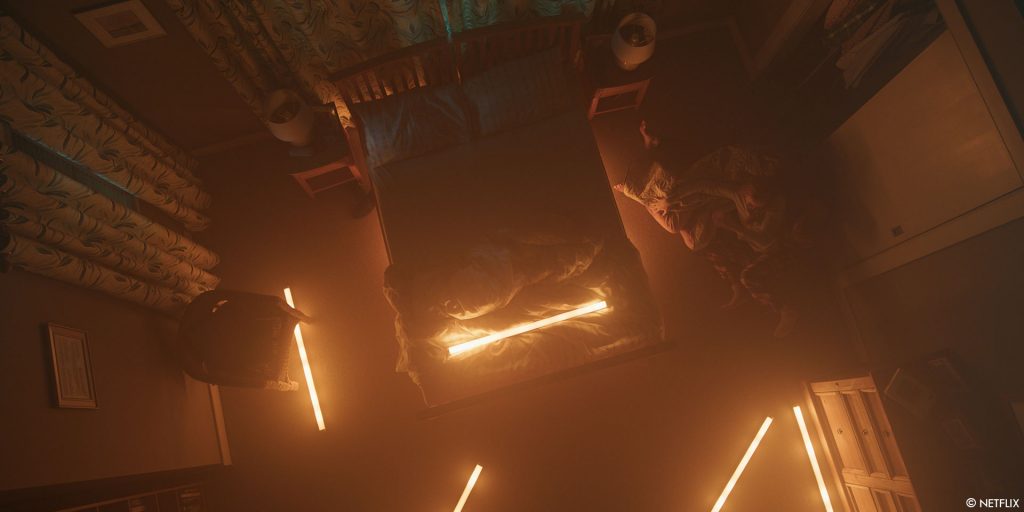
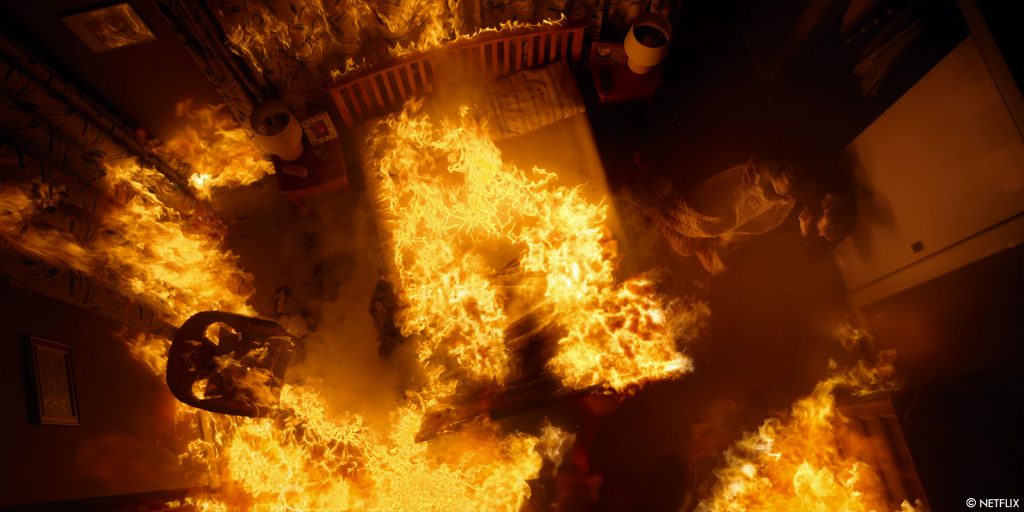
How was split the work amongst the Cinesite offices?
It wasn’t, Cinesite London was the lead vendor on the six-part series.
What kind of references and influences did you receive for the magical effects and creatures?
It was part of Cinesite’s overall remit to design the magical effects, so we received very little specific detail other than the written descriptions from script. This was also the case for The Burnt Ones which were described as “mysterious and deadly beings, burned husks of young soldiers who were destroyed in a catastrophic event.” It’s always rewarding to be granted creative interpretation towards the VFX from the script to screen.
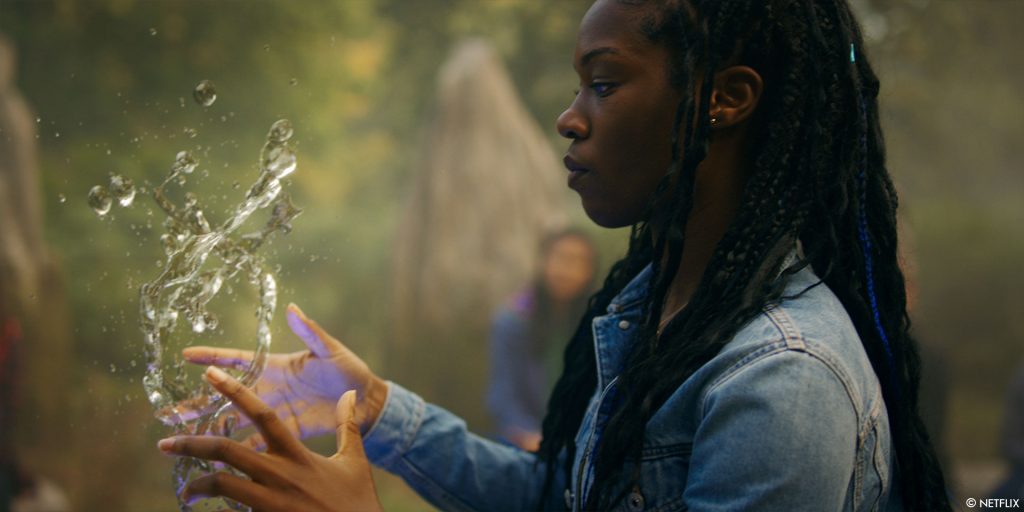
Can you elaborate about the FX work and how those powers evolved during the series?
“Elemental” is the defining word for the look of the VFX. The fairies’ magical powers are based around magic derived from water, fire, earth, light, air and the mind. The latter, “empaths,” possess enhanced perception which allows them to hear emotions in others. The students learn to develop and control these powers in various classroom settings. Visual effects were used to bring all of the magic to life, from sprouting CG plants to sparking electricity, levitating water orbs and the more subtly visualised powers of empaths and manipulators of light.
There is one sequence where teacher Callum meets an unpleasant end. In this sequence, Beatrix vaporises Callum with electricity and he disintegrates into thin air. We Lidar scanned the actor in situ and a 3D representation of his body was used to blow him apart in Houdini. We wanted to achieve an evaporation rather than a disintegration.
Through this effect a key challenge was dealing with the change of state in a magical way – going from a solid object, to clumps and finally into thin dust. We incorporated lighting effects and layers of reprojection to add visual interest to the effect and to integrate it into the final shot.
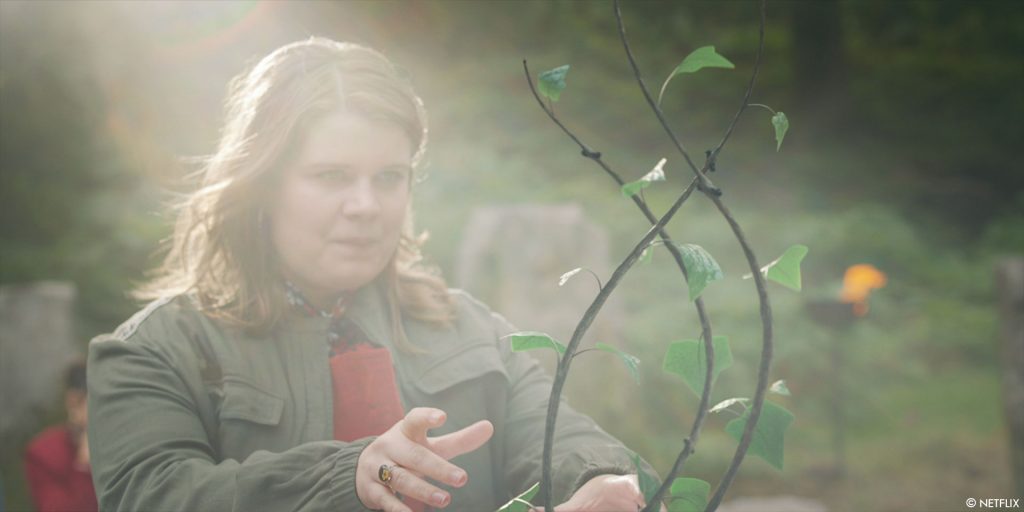
Bloom’s ability with fire is at the heart of the series. There’s an early sequence where she’s standing in a stone circle and summoning flames from her hands; we had to be careful not to let it look like she’s simply on fire, it had to be clear that she’s controlling her powers, and that was quite a tricky balance.
In the final battle, where Bloom finally comes to grips with her powers and tendrils and flames seem to lick around her body, we had to find a balance between adding the right amount of flame and getting the best distance from her body to make the combustion seem controlled and intentional. We found that a distance of about 3 inches away from her body worked best and we specifically choreographed the flames to mould to her body’s geometry.
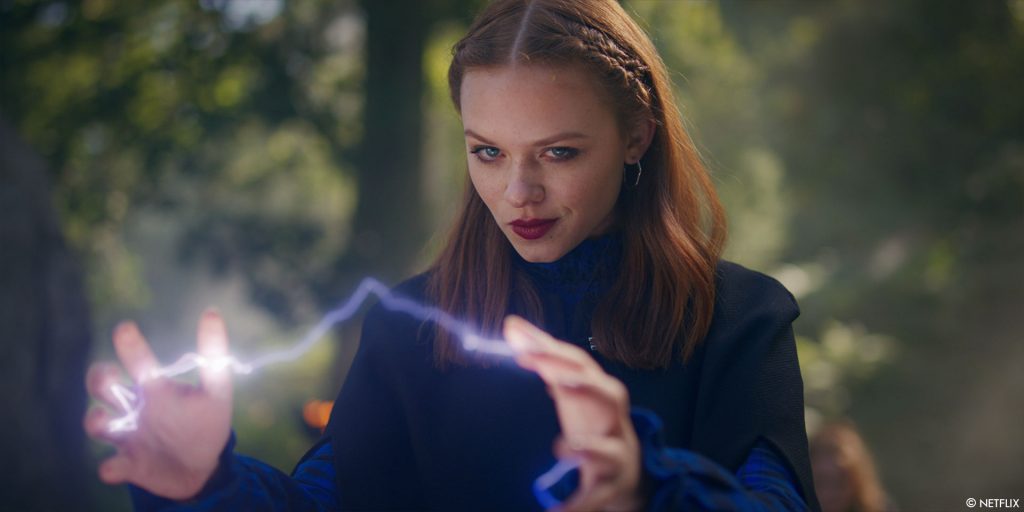
Which power was the most complicated to create in the series and why?
Bloom, the central character in the series, has fire as her power. As her skills develop, she becomes the strongest of the fairies and extensive VFX were required to add convincing flames emanating from the actress’s hands and tracking around her body as she learns to control and direct her power.
There are lots of forcefields throughout the series – from the one surrounding the school to the one cocooning Rosalind. What techniques were used for these?
CG Supervisor Samir Ansari: The ethereal magic forcefield surrounding the Alfea Grounds features prevalently in the series and serves several story points. Our brief was to create an ethereal curtain that was almost invisible to the eye until it is touched or interacted with. The effect centers around a detailed cloth simulation wrapped in several layers of particle simulation. Although the effect was always described as an ethereal entity, the show’s creator also wanted to maintain a physical quality to it. We achieved this through rendering refractive and iridescent layers that interacted with each other in a physical sense. In addition to this we generated self-illuminating particles that would light up and wrap around the actors whenever they were touched. This posed many challenges, requiring very accurate rotomation and close attention to detail.
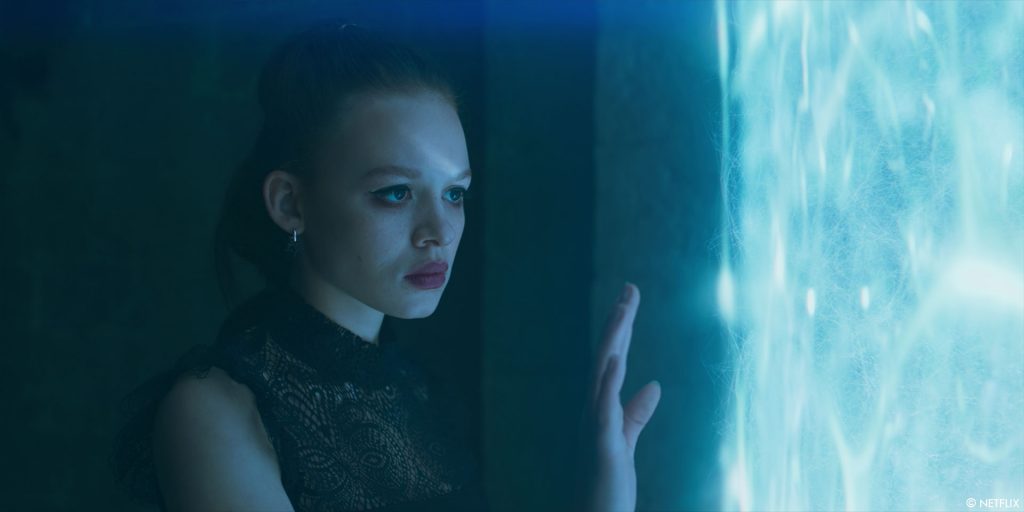
Can you explain in detail about the creatures, the Burned Ones?
Throughout the series the terrifying creatures the Burned Ones are an ominous presence, appearing often in shadows, dimly lit. Their genesis is mysterious; they may have been created during a previous battle as the burned husks of young soldiers destroyed by a catastrophic event. They are glimpsed fleetingly in the grounds of the school, moving at lightning speed and they are deadly opponents in combat.
The Burned Ones were constructed from the inside-out, with internal anatomy driving all else to ensure both visual realism and to establish an authentic base for the animators to bring the creatures’ movement to life. Ziva was used to simulate the many flesh and armour elements together and to make a coherent structure that would move in a realistic way whilst remaining art directable. The VFX team developed solutions which allowed them to easily balance the various material properties in tandem through hand painted texture maps, along with decisions on how the geometry was built.
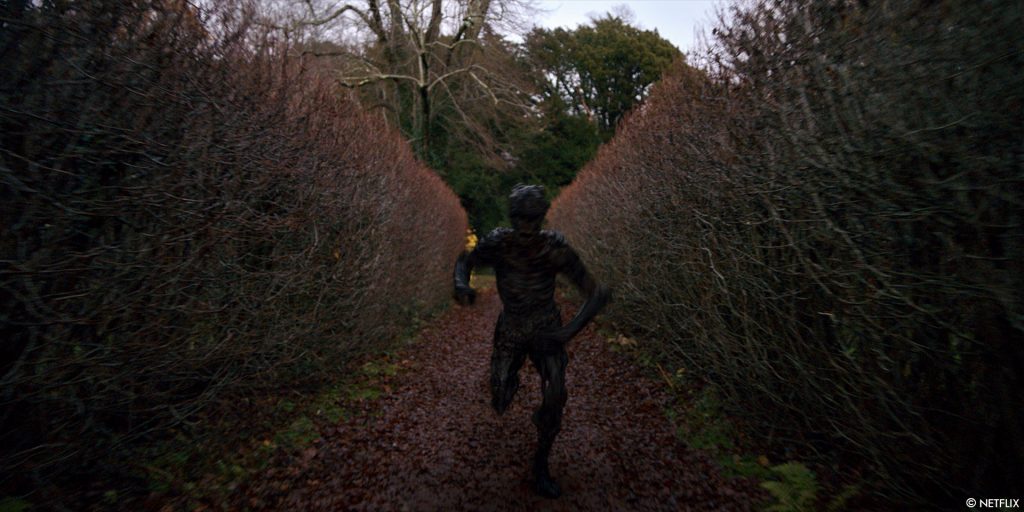
How did you work with the SFX and stunts team for their super-human agility?
Two prosthetic suits of the top half of the creatures were built and used on set for blocking out, lighting reference and interaction by the stunt team with the actors. I worked closely with the stunt team to choreograph the fight sequences for the CG takeovers, with the stunt performers initially delivering performances wearing the prosthetics.
The Burned Ones are 8 feet tall and made up of burned sinews and armour melted into bones, in some places leaving gaps where tendons have contorted and pulled apart. The internal fissures, extreme height and supernatural athleticism of the creatures all required a CG solution, so ultimately the stunt actors would be replaced about 90% of the time.
The Burned Ones’ athleticism is supernatural. Although they’re big, they needed to be very fast and agile. My analogy was that they’re like fullbacks or rugby players, even Usain Bolt, who has that body mass but is also extremely quick on his feet; they needed to be able to cover a lot of ground quickly. There’s a fine balance between creating something that is light on its feet, but also powerful and weighty.
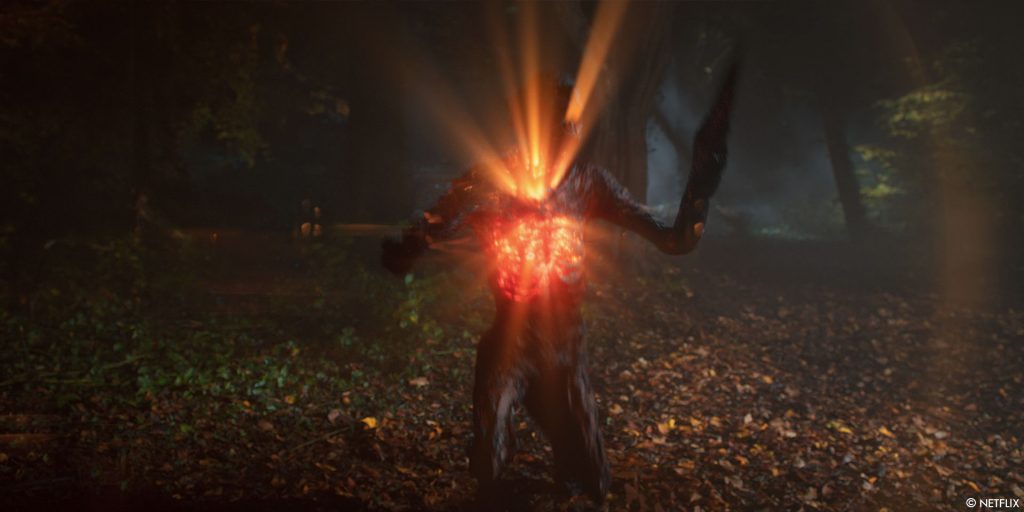
How does that affects your animation work and how did you manage their “burning” effect?
CG Supervisor Samir Ansari explains: The Burned Ones appear frequently in the series, almost always in dimly lit, creepy surroundings. One of the many challenges was making sure that they were just visible enough to tell the story but remained buried in enough shadow to preserve the mystery of the beasts. The Burned Ones we created for the show were full CG creatures that were used in the majority of the shots, with the remainder using onset prosthetics. When building the Burned Ones we actually began from the inside-out, thinking about the anatomy above all else to ensure both visual realism and an authentic base for the animators to bring the creatures life.
In its design, the creature has many exposed areas of muscle, tendons, thin flesh, scar tissue and even sections of solid metal. We used Ziva to simulate all of these elements together and make a coherent structure that would move in a realistic way while still being art directable. We developed several solutions that would allow us to easily balance all of these differing material properties in tandem through hand painted texture maps and decisions on how we built the geometry.
For the skin’s surface we tried to cram as much fine detail as we could through a combination of high resolution geometry, sculpting and micro-bump. This was a crucial element to the realism of The Burned Ones as in many shots they would only appear as a silhouette outlined by strong, rear-focused lights. A lot of work went into the shading of the creature to create a gruesome, slimy look that responds accurately to the lighting in the scene. We also had to consider the shading for the internals of the creature as we had a fair few shots involving The Burned Ones being illuminated with magic from within.
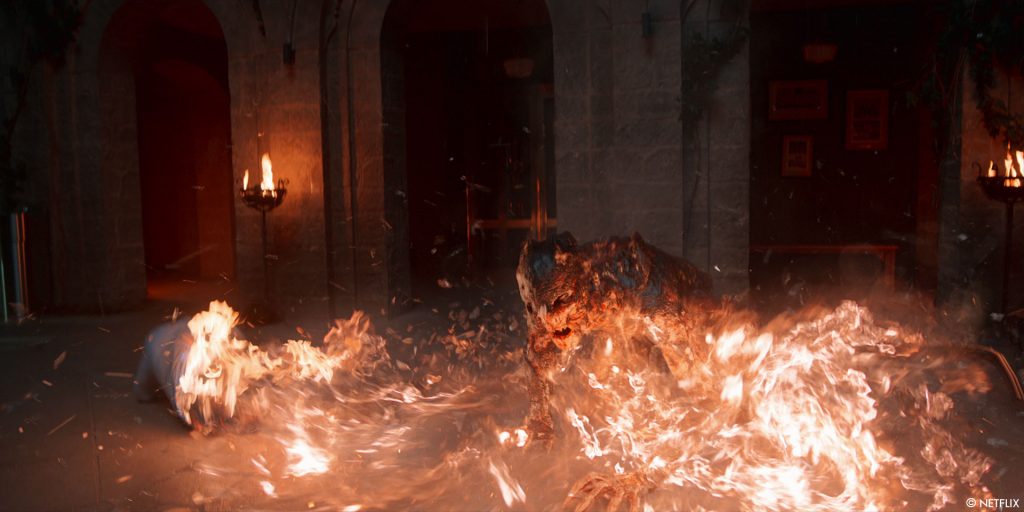
How did you enhance the school and its environment?
The school’s exteriors were filmed mainly at Kilruddery House, a stately home outside Dublin with extensive grounds and at Luggala House in Co. Wicklow. The final Alfea was a combination of both locations, using the surrounding countryside to define the base geography which was augmented in CG. Cinesite used a Lidar scan and photogrammetry of Kilruddery to build the textured and fully lit CG extensions.
Exteriors were shot at Kilruddery House, a stately home outside of Dublin which is open to the public and which had great gardens. It created a good base to which we could add additional buildings, towers etc. adding to the original architecture with a range of styles.
The series opens with a drone shot of Luggala House in Co. Wicklow. The final Alfea was a combination of both buildings and locations, using the surrounding countryside to define the base geography which was augmented in CG. We did a thorough Lidar scan and photogrammetry of the Kilruddery House location to provide textures for the set extensions and rebuilds. Additional 3D trees in the surrounding grounds were created using Speedtree.
The third location was the studio at Ardmore where the interiors for the boarding school were shot, including the courtyard, glass domed hall, classrooms, dormitories, cafeterias etc.
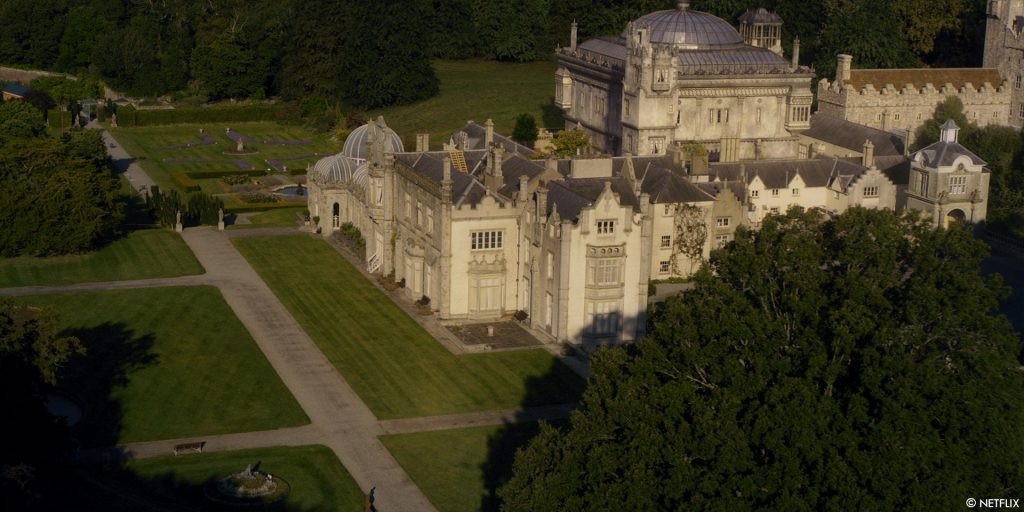
Which sequence or shot was the most challenging?
The transformation and final battle sequence was pretty challenging. Partly because of the shot count and also the environment the battle takes place in – editorial had a technique of using whip pans to take the audience between action sequences in the fight. We created CG environments to carry the shots through the wipes. The choreography of these whip pans was difficult to get right; we’re coming off of CG into live action, then moving back into CG. We were constantly mixing up different cameras, environments and settings.
Did you want to reveal any other invisible effects?
In episode four Beatrix and Bloom are exploring the east wing where they come cross the War Room, a room filled with maps, scrolls and battle plans. At its centre is a large self-illuminated disc. Beatrix’s static electricity makes it come alive with a more organic interpretation of a hologram, so the sand within the disc rises into the air to become a topographical representation of Alfea. Initially you see only the school at its centre, then we zoom out to see all the realms and you get a sense of the scale of the magical environment. This effect was created using a rudimentary model placed in a Houdini simulation.
CG Supervisor Samir Ansari adds: Our brief was to create a holographic map of the Alfea Grounds, forged completely in sand. Our setup involved hundreds of millions of particles that were generated and simulated using a bespoke Houdini grain solver. We began with a geometry shell of the terrain and had this drive the particle simulation as well as supporting volumetric dust for the effect. As this terrain was animated and changed over the course of the shot the grains needed to be dynamic so they could adapt to this while still upholding the visual integrity of the map, making sure it was easily recognisable and readable. The effect was then lit and fully rendered in Arnold and Gaffer.
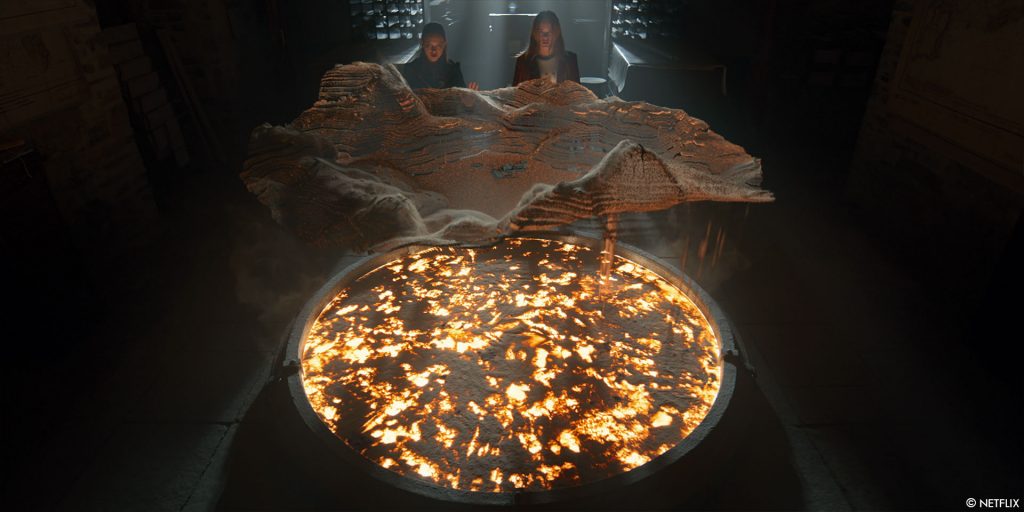
What is your favourite shot or sequence?
There’s a nice shot of Alfea school from one of the drones which is incidental but completely believable. There are also a couple of the sanctum latus shots which are very pretty in their final iterations.
What is your lasting memory on this show?
We had just finished shooting in time to go into post and editing and had locked each episode just as Covid took over. Much of the visual effects development was well under way, with most looks established for key environments and magic effects before Covid hit. There’s nothing like being in a room with clients and designers to work through design problems, but having said that, there was nothing that was insurmountable, it’s just that everything took longer. As a result of us having wrapped photography and being at an advanced development stage, working remotely was much more straightforward than it might otherwise have been and the timing of the show was very fortunate.
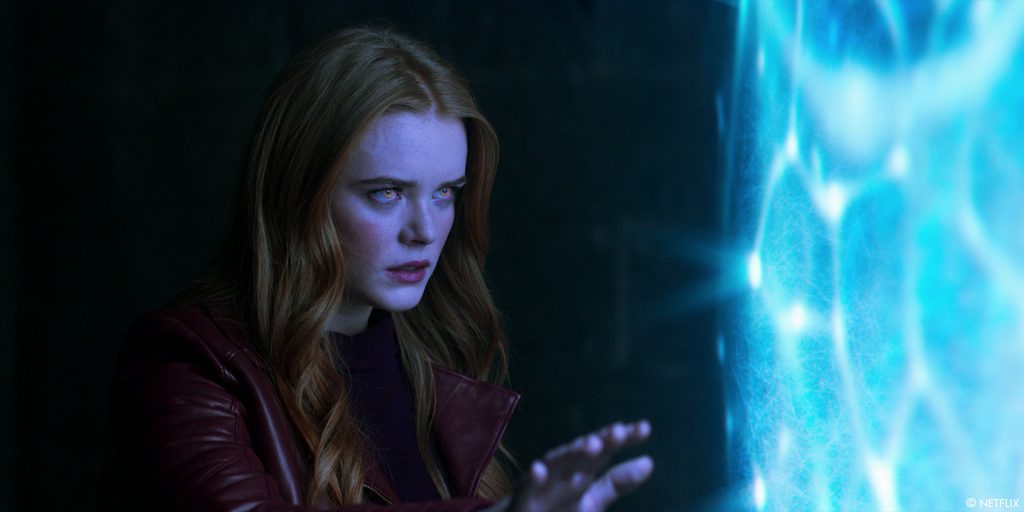
How long have you worked on this show?
Senior supervision, art design and concept began in June 2019.
Full-steam VFX production kicked off in September 2019, final delivery was July 2020.
What’s the VFX shots count?
Approximately 450 shots.
What was the size of your team?
In total, the Cinesite team amounted to 110 artists and 40 technical and support personnel.
What is your next project?
It’s too early for me to say but I’m sticking with magic!
A big thanks for your time.
// Fate – The Winx Saga: VFX Breakdown of Bloom’s transformation
WANT TO KNOW MORE?
Cinesite: Dedicated page about Fate: The Winx Saga on Cinesite website.
Netflix: You can watch now Fate: The Winx Saga on Netflix.
© Vincent Frei – The Art of VFX – 2021